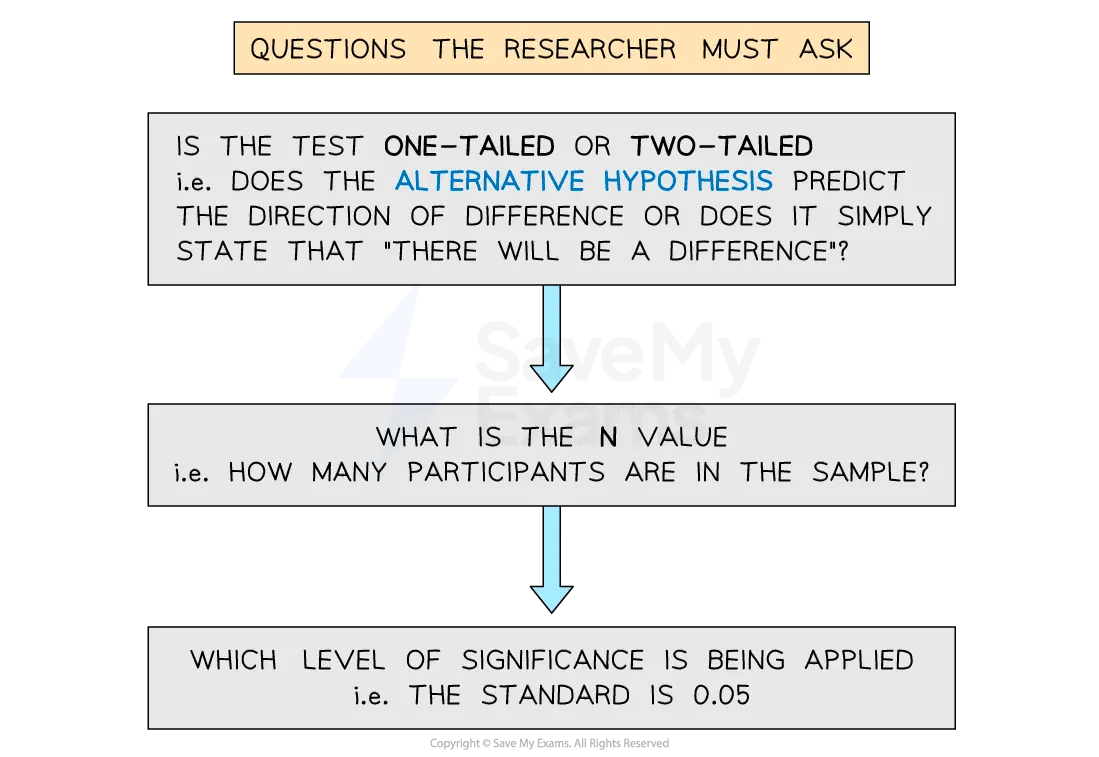Syllabus Edition
First teaching 2025
First exams 2027
Inferential Statistics & Probability (DP IB Psychology): Revision Note
Probability & significance
To assess this, they use a level of significance, which reflects how likely it is that chance factors are responsible for the results
The level of significance is expressed as p (probability):
p < 0.05 means that the probability of the result occurring by chance is less than or equal to 5%
This is the standard threshold in psychology
p < 0.01 means that the probability of chance is less than or equal to 1%.
This more stringent level is used when:
There may be a human cost (e.g., drug trials)
Previous research findings are contradictory
Researchers consult statistical tables to identify the critical value for their test
If the calculated value meets or exceeds the critical value, they can reject the null hypothesis and conclude the result is significant
Using statistical tables
Once the researcher has conducted their research and carried out a statistical test, the test produces an observed (or calculated) value, which is used to determine whether the results of their study are significant
The observed/calculated value needs to be compared to the critical value in the critical values table to determine significance
To find the critical value from the table, the researcher must ask the following questions, which will help them to use the critical values table properly:

Type I & type II errors
A Type I error occurs when the null hypothesis is rejected when it should have been accepted
The researcher claims that the results are significant when in fact they are not (also known as a ‘false positive’)
A Type I error is more likely to happen when the researcher uses a probability value that is too high, e.g.,
0.1 rather than 0.05
0.06 rather than 0.05
A Type II error occurs when the null hypothesis is accepted when it should have been rejected
The researcher claims that the results are not significant when in fact they are (also known as a ‘false negative’)
A Type II error is more likely to happen when the researcher uses a probability value that is too low, e.g.,
0.01 instead of 0.05
0.03 instead of 0.05
Using a 0.05 significance level guards against making either a Type I or a Type II error

Unlock more, it's free!
Did this page help you?